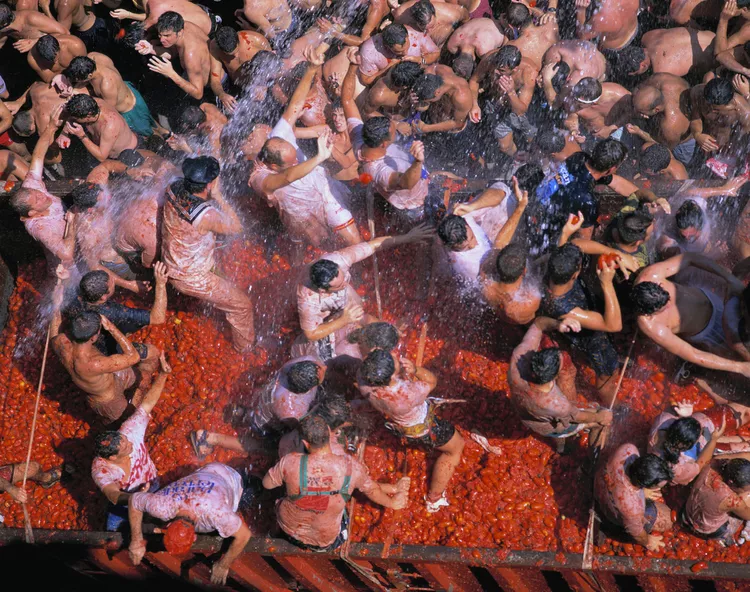Summary of Spain’s Bizarre Festivals
Bizarre & Weird Festivals in Spain
Spain boasts an impressive variety of weird and quirky festivals that may seem bizarre to anyone unfamiliar with the cultural context. From being chased by frantic bulls to engaging in lengthy tomato fights, these lively rituals showcase a rich tapestry of Spanish tradition. Additionally, if you look closer, you will discover even more strange festivities tucked away in various regions of the country.
The Spanish landscape is peppered with surreal experiences. You might hear Christmas carols in the sweltering heat of August, or find wine flowing freely from fountains in towns like Cadiar and Toro during specific months. Furthermore, it is not unusual for farmers to march their sheep through the heart of Madrid for the sheer joy of it. Such festivals often take on unconventional twists, including Catalonia’s infamous scatological Christmas traditions and the uniquely peculiar Lunes de Aguas in Salamanca, which welcomes back the city’s ‘ladies of the night’ after Lent.
Tomatina Tomato Fight: Aim… Fire!
Among Spain’s most iconic bizarre festivals is the Tomatina Tomato Fight. However, this active celebration is far from the only time Spaniards engage in throwing objects at each other. For instance, the town of Lanjarón hosts a large water fight every June 24, while Haro’s Batalla del Vino on June 29 features locals battling each other using wine. This is hardly wasteful, as the region is celebrated for its renowned wines.
- Experience the excitement of a Batalla del Vino Tour.
- Join in the fun at a Tomatina Tour.
If you’re looking for something even messier, the inhabitants of Laza, Galicia participate in ant-throwing during Carnival. Moreover, El Puig’s Battle of the Dead Rat adds to the quirky nature of Spanish festivities. Every year, the Cascamorras festival in Baza and Gaudix reenacts a humorous historical feud, where participants throw tar and paint at a hapless Gaudix resident who fails to steal a cherished image from Baza.
Finally, if you’re in Valencia, brace yourself for the Batallas de los Flores (Battle of Flowers), where locals enthusiastically throw flowers at one another.
Staying Safe the Spanish Way
For families, safeguarding newborns against evil spirits is taken seriously during the El Colacho festival in Castillo de Murcia. In this curious event, babies are laid on the ground as grown men dressed as devils jump over them! It begs the question: who is truly keeping babies safe in this situation?
Hypochondriacs can take part in Granada & Jaen’s Hogueras on December 21, where participants jump through bonfires as a whimsical method of seeking protection from ailments. And for those fortunate enough to survive various experiences, the Fiesta de Santa Marta de Ribarteme offers another unique twist: showing gratitude during mass while arriving in a coffin! This fascinating tradition showcases the peculiarities of Spanish culture.
Cruelty to Animals
Sadly, some Spanish festivals exhibit troubling treatment toward animals. For example, during Lekeitio’s Fiesta de los Gansos, a deceased goose is suspended over the harbor, as participants jump to grasp it, an event that animal rights activists have fought to change.
Likewise, a notorious festival in Manganeses de la Polverosa, which involves tossing a goat from a bell tower, was outlawed in 1992, causing controversy over what constitutes entertainment. As awareness about animal cruelty grows, discussions about the future of such events continue.




